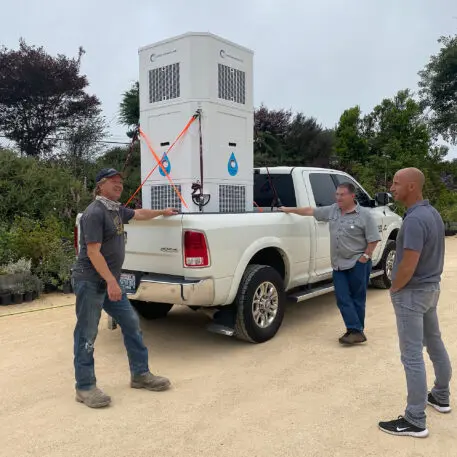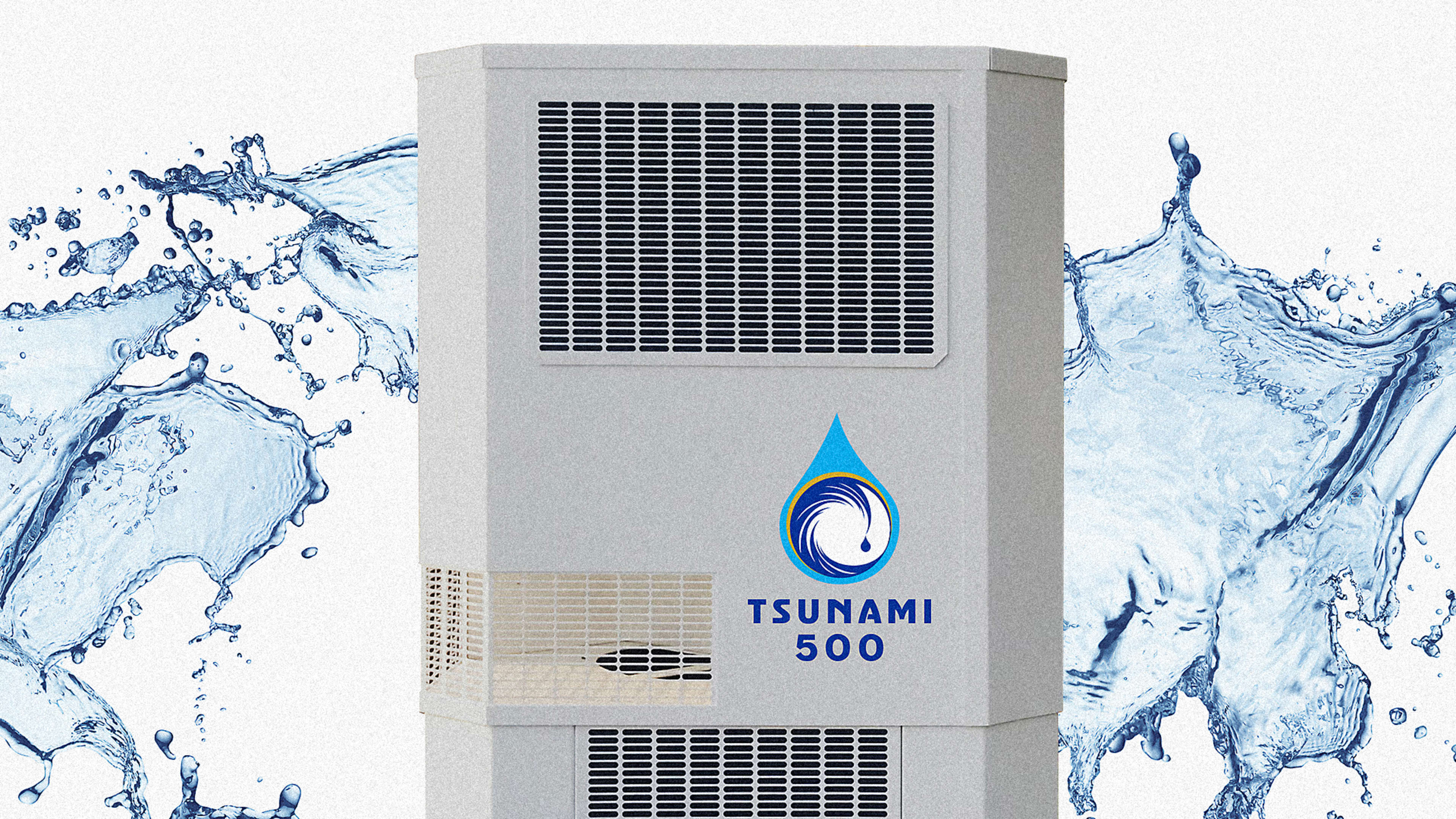Mendocino, a tiny town on the California coast, is running out of water. The town, which has around 1,000 residents—but double that number of tourists each day in the summer—relies on a network of wells rather than a centralized water system. And as the extreme drought in the area continues, those wells are running dry.
As many as 100 wells out of 420 in the community “have either gone dry or are going dry with the second drought year in a row,” says Gary Starr, a local resident. “So the town’s a little bit freaking out.” Starr is now pushing for a new solution: technology that pulls water from the air.
Starr works with GoSun, a company that sells off-grid tech and now distributes machines from Tsunami, one of a handful of manufacturers that make air-to-water units. “The machine draws in fresh ambient air through a filter, and that filtered air passes through another compartment where we have a condenser coil to chill the air,” says Ted Bowman, a product developer at Tsunami. In the same way that an air conditioner creates condensation, the system pulls drips of water out of the air, and then collects it in a basin to filter and purify it. “We’re basically doing the same thing in nature as a cloud does, but we’re trying to do it mechanically,” Bowman says.

It’s not cheap, with a unit running around $30,000. But it’s less expensive than the millions that would be needed to build major new infrastructure like a desalination plant, which purifies seawater, or a water reclamation plant, which treats and recycles wastewater. The town is currently trying to get government funding for a permanent solution, Starr says. “But it will take years because government, unfortunately, doesn’t move fast,” he adds. “So we’re trying to move faster and say, this technology is here.” He’s now trying to raise funds to help residents buy the equipment.
In the past, Tsunami has mainly targeted developing countries, but as long-term drought becomes more common in Western U.S. because of climate change, this type of technology may begin to make more sense here. Another company reportedly offered to pilot a system that captures water from fog, though local officials said that it would be difficult to permit and would block scenic views along the coast.
Right now, some Mendocino residents and businesses are relying on water deliveries from out of town. But Fort Bragg, a nearby city that has served as a backup source of water in the past, can no longer send water because it’s worried about its own supply. Willits, another nearby town, has said the same thing. The cost of deliveries continues to increase as trucks have to travel further. “Literally, the water trucks can’t keep up,” says Starr.
Recognize your brand’s excellence by applying to this year’s Brands That Matter Awards before the early-rate deadline, May 3.
